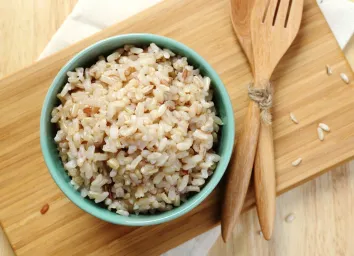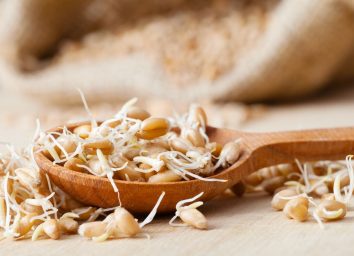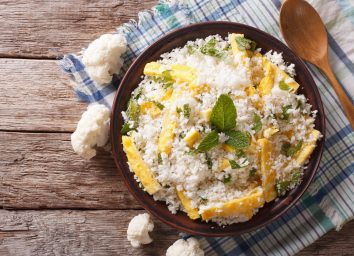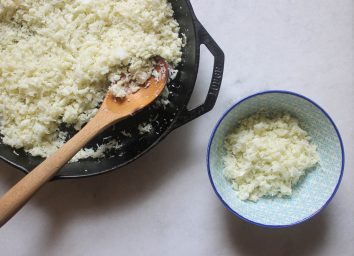Is Instant Brown Rice As Healthy As Normal Brown Rice?
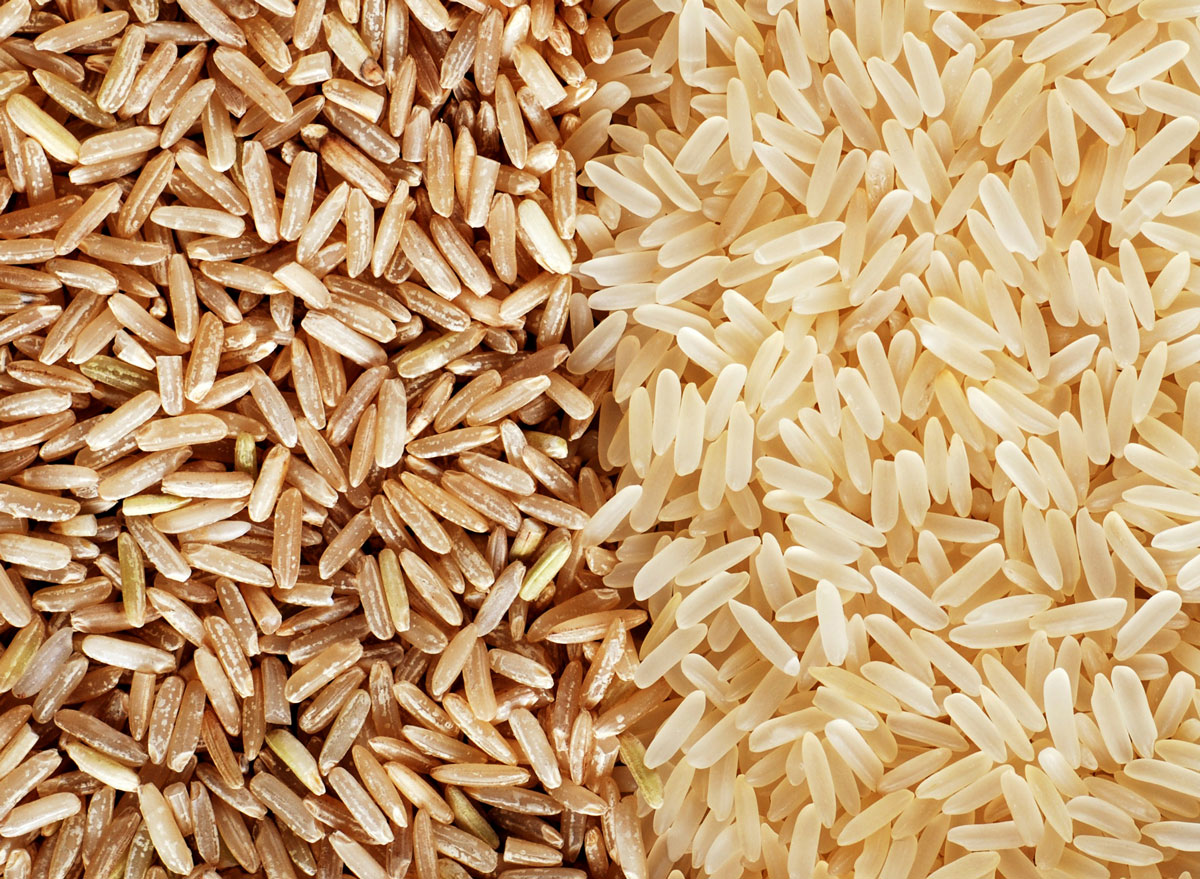
You should be eating more whole grains and fewer refined grains. More specifically, the 2015–2020 Dietary Guidelines recommends that at least half of all grains you consume should be whole.
One of the most popular swaps when trying to eat more whole grains is to substitute your dinner side of white rice for brown rice. But this simple swap is easier said than done.
Prepping whole grain brown rice can be difficult for those with a busy schedule. Because it’s less processed than its polished, refined peer, brown rice can take between 45-50 minutes if you’re cooking it on the stove—which is double the time it takes to cook the same amount of white rice. That can cramp anyone’s style when it comes to cooking a healthy meal quickly.
Enter: minute (or instant) brown rice. Minute rice cooks in—get this—minutes instead of just shy of an hour. The question is, “is it too good to be true?” Is minute brown rice healthy? Is it a sufficient source of whole grains? We asked dietitians to find out.
Why whole grains are a necessity in a healthy diet.
The first thing we need to address is why you should even be concerned about adding whole grains to your diet.
A diet high in whole grains is great for heart health and can significantly reduce your risk of coronary heart disease and cardiovascular disease, according to a review in BMJ. The review also found a correlation between high whole-grain intake and reduced risk of mortality from respiratory disease, diabetes, infectious disease, and all non-cardiovascular, non-cancer causes.
Although researchers saw the strongest benefits in those who consumed 7 to 7.5 servings of whole grains per day, they note that intakes of just 1 or 2 servings of whole grains a day could reduce the risk of premature mortality. Ideally, they recommend 3 servings a day.
Brown rice, specifically, is a superior source of fiber, B vitamins, and minerals like magnesium, which has been studied to reduce the risk of stroke. Brown rice has also been found to reduce the risk of type 2 diabetes.
What is the difference between brown rice and white rice?
“Rice that has just been hulled is brown rice, and is considered a whole grain because it still has the bran and germ portion of the grain along with the endosperm (the bran and the germ are where the beneficial nutrients are stored),” says Caroline West Passerrello, MS, RDN, LDN, registered dietitian nutritionist and spokesperson for the Academy of Nutrition and Dietetics.
One ½-cup serving of brown rice is packed with 17 percent of the recommended daily intake of whole grains, according to the Whole Grains Council.
White rice, on the other hand, takes the processing a step further to remove the bran and the germ, leaving only the endosperm. This refined grain has 25 percent less protein and significantly lower levels of 17 key nutrients.
What is minute rice?
“Rice can be hulled and then milled or processed or the rice can be processed with the hull on before milling; referred to as raw or parboiled, respectively,” says Passerrello. “Either raw or parboiled rice can then be blanched, steamed, rinsed and dehydrated to become ‘instant’ rice.”
Basically, minute rice is rice that has been stopped just short of being fully cooked, so you just need to do the final few minutes of cooking yourself.
Is minute rice as healthy as whole grain brown rice?
The good news: minute brown rice is nutritionally not that different from slower-cooking brown rice. Normal brown rice may contain slightly more nutrients that may be lost during minute rice’s processing, but minute brown rice is not a bad whole-grain option.
“While instant brown rice is slightly pre-cooked and then dehydrated (and this does result in a loss of some nutrients), the difference is inappreciable,” says Monica Auslander Moreno, MS, RD, LD/N, nutrition consultant for RSP Nutrition.
Minute brown rice structurally has the same elements as normal brown rice that make it a whole grain: the germ, bran, and endosperm.
“However—taste may be quite compromised,” Auslander Moreno notes.
Passerrello adds that on top of taste, the texture will also differ between the two preparation methods: “The taste and texture of instant brown rice will be different from raw brown rice.”
How to pick the healthiest instant rice.
Not just any minute brown rice will do. “When instant rice is flavored there is a greater chance the product will be higher in sodium or even sugar in some instances,” shares Passerrello.
It’s important to pay attention to the label if you’re looking to avoid added sodium or sugar, as well as preservatives.
“When buying packaged instant or ready-to-eat rice, you always want to check the ingredient list and select the options that have just brown rice or just brown rice and oil like canola or sunflower. Unflavored, ready-to-eat brown rice can still have added sodium or emulsifiers and there are options without, so check the label,” she adds.
How to eat more whole grains.
“Keeping some plain instant brown and ready-to-eat brown rice in the pantry or freezer is a great way to meal prep,” says Passerrello. “That way when you are short on time or have failed to meal plan, you can still pull together a balanced meal with whole grains.”
If you get sick of the minute brown rice, there are still other “quick cooking” whole grains that you could swap.
“You can best access all the unique nutrients in a myriad of grains by alternating minute rice with minute quinoa,” says Auslander Moreno. “Instant cooking oats do actually tend to spike blood sugar more than rolled, but even rolled oats can be cooked in as little as two minutes in the microwave.”
And of course, if you do find more time to cook normal brown rice in bigger batches at the start of your week, it’s recommended.
“If you have the time, you can prepare a large batch of brown rice to use in multiple dishes throughout the week,” says Passerrello. “Refrigerate any leftover cooked rice that you are not planning to use immediately in a shallow container and reheat with about two tablespoons of liquid per cup of rice in the microwave or stovetop.”
